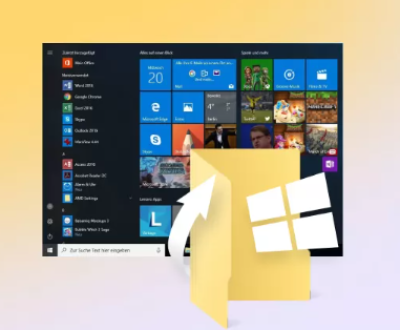External hard drives are essential tools for storing large amounts of data, backing up important files, and transferring information between computers. However, like all electronic devices, they can sometimes malfunction or become damaged, leading to data loss. The loss of valuable files or documents due to a malfunctioning hard drive can be a major source of frustration.
Damaged external hard drives come in different forms of failure. Some of the most common types include physical damage (e.g., a dropped drive, exposure to water), logical failure (such as corrupted files or system errors), or software issues (including file system corruption). Regardless of the cause, the loss of data does not necessarily mean permanent loss. With the right knowledge and tools, it is possible to retrieve data from a damaged external hard drive.

Types of External Hard Drive Damage
1. Physical Damage
Physical damage is the most severe form of harm that an external hard drive can experience. It often occurs due to dropping the drive, exposure to liquid, or extreme heat. When physical damage occurs, the drive’s internal components, such as the read/write heads or platters, could be compromised, leading to data loss. If the drive’s housing is cracked or dented, or the drive is exposed to moisture, it can render the drive inoperable.
2. Logical Failure
Logical failure happens when the drive’s file system becomes corrupted. This could occur due to improper ejection of the device, unexpected power outages, or even virus infections. Logical failures are often less severe than physical ones, and in many cases, the data is still accessible, but the drive may not be recognized by your computer.
3. Software Issues
In some cases, software-related problems can make a drive inaccessible. This can occur when the drive’s operating system is corrupted, or when there’s an issue with the drive’s firmware. Software failures typically require troubleshooting and repairs using specific software tools designed to recover data.
4. Electrical Failure
If your external hard drive is plugged into a faulty USB port or is exposed to power surges, the electrical components of the drive may fail. This can cause the drive to stop working altogether or result in intermittent recognition of the device. Fortunately, these types of issues may be easier to address by replacing the power supply or using a different port or cable.
Signs of a Damaged External Hard Drive
Recognizing the symptoms of a damaged external hard drive can help you determine the best course of action for data recovery. Here are some of the most common signs that your external hard drive may be damaged:
The Drive is Not Detected If your external hard drive is not showing up on your computer or is not being recognized by the operating system, it may have a serious issue. This could be a sign of either a physical problem or a logical failure.
Strange Noises If your external hard drive is making clicking, grinding, or whirring noises, it may indicate a mechanical failure. These sounds are often caused by faulty read/write heads or damaged internal components.
Slow Performance If the drive is taking an unusually long time to read or write files, it could signal a failure within the drive’s electronics or internal storage.
Error Messages If you are seeing error messages such as “The drive is not formatted,” “File system error,” or “Drive is unreadable,” this could point to corruption within the drive’s file system.
Power Issues If your external hard drive is not turning on, or if the LED indicator light is blinking erratically or not turning on at all, this could indicate a power issue, often related to electrical failure.
Step-by-Step Process to Retrieve Data from a Damaged External Hard Drive
Step 1: Do Not Panic!
The first thing to remember is to remain calm. It’s crucial not to attempt excessive force or tampering with the drive, especially if it’s a physical failure. In some cases, data recovery can be accomplished with minimal effort. However, panicking and trying to fix the drive aggressively may make things worse.
Step 2: Check the Basics
Before diving into complex recovery techniques, check some basic things:
Try a Different Port or Cable: Sometimes, the issue could be a faulty cable or USB port. Try connecting the drive to a different USB port or use a different cable.
Test on Another Computer: There may be an issue with the computer’s USB controller. Try connecting the drive to a different computer to see if it is recognized.
Power Source: If your external drive has its own power supply (such as a 3.5” desktop drive), make sure it is receiving adequate power. Check for issues with the power adapter or the power source itself.
Step 3: Use Data Recovery Software
Panda Assistant is a comprehensive data recovery software designed to help users retrieve lost, deleted, or inaccessible files from a variety of storage devices. Whether you’re dealing with an accidental deletion, a corrupted file, or a failed hard drive, Panda Assistant offers a reliable and user-friendly solution to restore important data. It is suitable for personal, business, and professional use, as it supports various types of devices, including hard drives, external drives, USB flash drives, SD cards, and other storage media.
Key Features of Panda Assistant
1. User-Friendly Interface
One of the standout features of Panda Assistant is its intuitive and easy-to-navigate interface. Even for those who are not tech-savvy, the software provides a step-by-step recovery process. With clear instructions and a simplified design, users can quickly begin scanning their devices for recoverable files.
2. Extensive File Recovery
Panda Assistant supports a wide range of file types, including documents, images, videos, audio files, and emails. Whether you’re trying to recover an important Word document or a precious photo, Panda Assistant ensures that the recovery process covers all the key file formats. It can also recover data from deleted partitions, formatted drives, and even from drives with damaged file systems.
3. Deep Scan for Thorough Recovery
For more severe data loss situations, Panda Assistant features a “Deep Scan” option. This advanced scanning algorithm thoroughly examines the storage device for hidden or lost files, increasing the chances of retrieving data that might not be visible through a standard scan. This feature is particularly useful when dealing with corrupted or formatted drives.
4. Preview Before Recovery
Panda Assistant allows users to preview the recoverable files before proceeding with the full recovery process. This feature is valuable as it helps you ensure that the correct files are selected, saving you time and effort. Whether you’re looking for specific documents or photos, the preview option makes it easier to confirm your choices.
5. Supports Multiple Storage Devices and File Systems
The software is compatible with various file systems like NTFS, FAT, exFAT, and HFS+, making it versatile enough to work with both Windows and macOS. It supports data recovery from a wide range of devices, such as internal and external hard drives, USB drives, memory cards, and even digital cameras, providing flexibility for different recovery scenarios.
6. Safe and Secure Recovery
Panda Assistant prioritizes the integrity and safety of your recovered files. Unlike some data recovery software that may further corrupt your files, Panda Assistant ensures that the restored data remains in its original condition, maintaining file quality. This feature is especially important for recovering sensitive or valuable information.
How to Use Panda Assistant
Using Panda Assistant is simple. Once the software is installed, the recovery process can be broken down into a few basic steps:
Launch the Software
Open Panda Assistant and select the storage device from which you wish to recover data.
Scan for Lost Files
Choose between a quick scan or a deep scan, depending on the severity of the data loss. The software will then search for lost or deleted files.
Preview the Files
Once the scan is complete, you can preview the recoverable files to ensure they are the correct ones.
Restore the Files
Select the files you wish to recover and save them to a safe location. It’s recommended to save the files to a different drive than the one being recovered from to avoid overwriting any remaining data.
Benefits of Using Panda Assistant
1. Cost-Effective Solution
Panda Assistant provides an affordable option for data recovery, making it a great choice for individuals and businesses alike. With various pricing plans, users can select a package that best suits their needs without breaking the bank.
2. High Recovery Success Rate
With its advanced scanning capabilities and file support, Panda Assistant boasts a high success rate for data recovery, even in cases of accidental formatting or partition loss.
3. Versatility and Flexibility
Whether you’re recovering data from an internal hard drive, external drive, or a memory card, Panda Assistant’s versatility ensures that no matter the device, you’re covered. It supports a wide variety of file systems, ensuring compatibility with most devices.
4. Data Safety
The program is designed to recover files without compromising the integrity of the data, providing users with peace of mind knowing their recovered files will be in the same quality as before.
Step 4: Attempt File System Repair
If the data recovery software is unable to recover your files due to file system corruption, you can try repairing the file system manually. The following tools can help:
CHKDSK (Check Disk) Command: In Windows, you can use the CHKDSK command to scan and repair corrupted file systems.
Open Command Prompt as Administrator.
Type chkdsk X: /f (replace “X” with the drive letter of your external hard drive).
Press Enter to run the scan and fix any errors.
Disk Utility (Mac): On a Mac, you can use Disk Utility to repair the drive.
Open Disk Utility from the Applications folder.
Select the external hard drive and click “First Aid” to check for errors and attempt repairs.
Step 5: Consider Professional Data Recovery Services
If all else fails, or if the drive has physical damage that prevents it from functioning properly, your best option is to consult a professional data recovery service. These services have specialized tools and clean rooms to recover data from severely damaged drives. They can be costly, but if the data is critical, professional services are your best option.
Look for reputable data recovery companies with experience in dealing with external hard drive failures. Some of the best-known companies include:
DriveSavers
Ontrack Data Recovery
SalvageData
Secure Data Recovery
Before opting for a professional service, ensure that you have exhausted all other recovery options and that the data you need is irreplaceable.
Conclusion: Safeguarding Your Data Going Forward
While retrieving data from a damaged external hard drive is possible in many cases, the best approach is always to be proactive about data safety. Here are some tips to protect your data in the future:
Create Regular Backups: Use both physical (external hard drives, USB drives) and cloud-based storage to keep copies of important files.
Proper Ejection: Always eject the external hard drive safely before unplugging it from your computer to avoid file system corruption.
Avoid Physical Damage: Keep your external hard drive in a safe, secure place away from extreme temperatures, moisture, or physical impact.
About us and this blog
Panda Assistant is built on the latest data recovery algorithms, ensuring that no file is too damaged, too lost, or too corrupted to be recovered.
Request a free quote
We believe that data recovery shouldn’t be a daunting task. That’s why we’ve designed Panda Assistant to be as easy to use as it is powerful. With a few clicks, you can initiate a scan, preview recoverable files, and restore your data all within a matter of minutes.
Subscribe to our newsletter!
More from our blog
See all postsRecent Posts
- How to restore deleted images 2025-06-30
- How to restore a deleted file on windows 2025-06-30
- is there any way to restore deleted photos 2025-06-30

 Try lt Free
Try lt Free Recovery success rate of up to
Recovery success rate of up to









